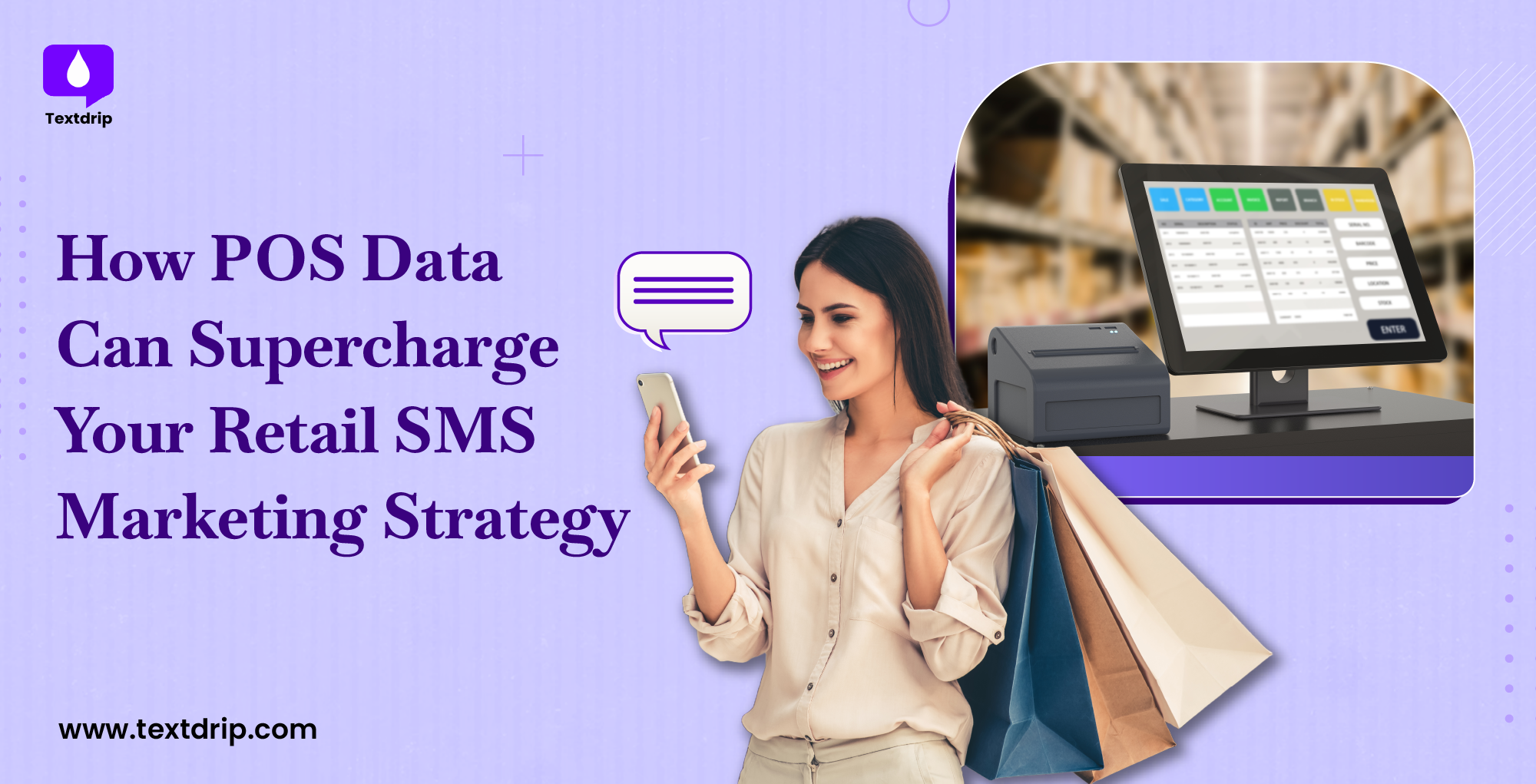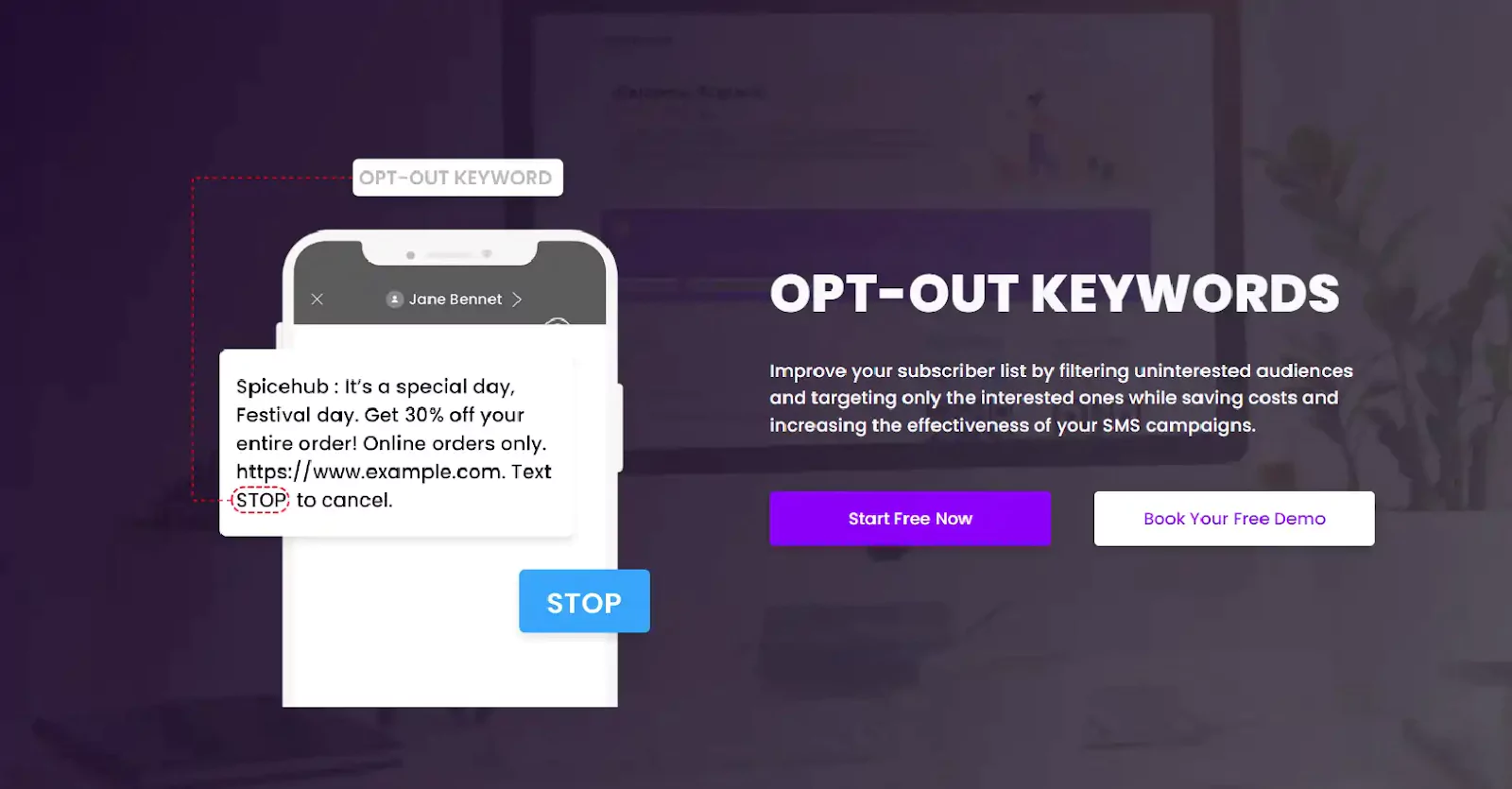10 Jul 2025
Bri Barnett

10 Jul 2025
Bri Barnett
SMS marketing works – but only when it feels personal. Suppose you’re still sending the same message to every customer. In that case, you’re leaving money on the table because you’re overlooking the valuable insights already stored in your point-of-sale (POS) system. You might be wondering, what is a POS in text? Simply put, it refers to using data from your point-of-sale system directly within your SMS marketing messages to make them more relevant and timely.
In this article, we’ll show you how POS data can supercharge your SMS marketing strategy, and help you build smarter, more meaningful customer relationships.
SMS marketing isn’t new, but how we use it needs to evolve. In the past, sending bulk messages with discount codes might have been enough. That kind of one-size-fits-all approach no longer applies. Consumers are more discriminating, wiser, and overburdened with marketing noise. To stand out, your SMS strategy must be smarter, and that starts with personalization.
People expect more from brands
Customers want messages that speak directly to them. They don’t want random texts – they want offers that make sense based on what they’ve bought before, what they might need next, and even when they usually shop. In short, they want messages that feel helpful, not annoying.
Generic messages don’t drive loyalty
A generic “10% off everything” message might get a few clicks, but it rarely builds long-term relationships. Worse, it might make your brand feel like spam. On the other hand, a well-timed message about a product they love, or a reminder when they usually come back to shop, builds trust.
Data is the missing ingredient
You know the good news? More useful messages are already in your POS system. Every time a customer buys something, your store keeps track of what they bought, when they bought it, how much they spent, and even how often they come back. That works great for SMS ads.
Not only is personalisation cool, it’s necessary
Retailers who use real customer behaviour to personalise their SMS marketing see more engagement, higher conversions, and more repeat purchases. More than just a name and phone number, though, is needed to get there: you need real buy insights.
POS systems are fantastic for learning about your customers. Every time a consumer purchases something, your store gathers helpful data about them: what they bought, when they bought it, how much they spent, and even the frequency of return. That’s fantastic for SMS marketing.
With POS data, you don’t have to guess what your customers want. Instead, you can see what they want. If someone always gets skin care products every three weeks, for instance, you can send them a gentle reminder right before they’re about to run out. It feels personal, helpful, and on time.
Your top customers deserve special treatment. With POS data, you can easily see who spends the most or shops most often—and send them VIP deals, early access, or thank-you messages. That kind of attention turns good customers into loyal fans.
When your messages match customers’ shopping habits, they’re more likely to respond. That means higher open rates, more clicks, and better results overall. It also means fewer opt-outs, because your messages are useful.

> Read more: Stop Being Ignored! How to Optimize SMS Open Rates Effectively
We all have different tastes. The seasons shift. People’s shopping habits change. You can stay on top with POS info. You can make sure you’re always sending messages that matter by keeping track of real-time purchases and making changes to your SMS campaigns as required.
The main point? Adding smart SMS tools like Textdrip to your POS system opens up a whole new level of powerful, quick, and personalized marketing.
Up next, we’ll look at real examples of how retailers are already doing this-and winning big.
So, how do real businesses use POS data to send better text messages? Let’s break it down with some simple but powerful examples. These ideas work because they’re based on real customer behavior, thanks to your POS system.
There was a customer who went to your shop or website, put something in their cart, but did not check out. Your POS and eCommerce system know what they left behind. You can send a friendly text like:
Still thinking about that blue jacket? It’s waiting for you – take 10% off if you buy today.
It feels personal and can bring them back to finish the purchase.
Let’s say a customer bought a popular item that sells out quickly – like a certain skincare product or a best-selling snack. When your POS system updates that it’s back in stock, send them a quick text:
Good news! Your favorite face serum is back. Order now before it’s gone again!
This is way more relevant than a random promotion.
Using past purchases, you can suggest products they might love. If someone often buys pet food, why not send them a deal on treats or toys?
Thanks for being a loyal pet parent! Here’s 15% off toys your pup will love.
Identify your top spenders through POS data and treat them like royalty. Early access, birthday messages, or just a thank-you go a long way.
Happy Birthday, Sarah! Enjoy 20% off your next visit-just our way of saying thanks.
> Read more: How To Send Bulk Text Messages on Automate
You’ve seen how POS data can supercharge your SMS marketing strategy. Now let’s talk about how to actually use it. Good news: setting up your SMS POS integration isn’t as hard as it sounds.
Not every POS system is the same. Your point-of-sale (POS) should keep track of what each customer gets, how often they shop, how much they spend, and product trends. And merchants can use this data to send personalised SMS campaigns. Magento 2 POS is a great choice because it makes it easy to sync data from your store and your website in one place.
Next, connect your POS to an SMS platform like Textdrip. Most platforms offer easy integration through apps or APIs. This step allows customer and sales data to flow directly into your SMS campaign builder, enabling personalized POS text messages that resonate with real buying behavior.
Once connected, you can start building SMS automations. For example:
Now, use your POS data to build smart customer groups. You can segment by:
You won’t have to guess what to say to each group; you’ll be able to send words that make sense to them.
It’s a good idea to use POS data to power personalized SMS ads, but like any other marketing plan, how you do it is important. To get the most out of your customer insights, make sure you find the right mix between being helpful and being too much when using POS in text message campaigns.
1. Don’t do too much; less is more
Just because you can send daily messages doesn’t mean you should. Even your most loyal customers don’t want to be bombarded. Use your POS data to target wisely—send messages only when there’s something truly relevant, like a product restock, a loyalty reward, or a seasonal promotion based on past purchases.
Tip: Set a monthly or bi-weekly SMS cap per customer segment. Track opt-out rates to know if you’re sending too often.
2. Send Messages at the Right Time
POS data can tell you more than what your customers buy – it can show you when they buy. If someone regularly shops on Saturday mornings, don’t send them a promo code on a Tuesday night. Meet them in their moment.
Tip: Use automation to schedule texts based on customer buying habits. Platforms like Textdrip make this easy.
3. Keep It Short, Friendly, and Focused
SMS has a 160-character limit for a reason-it’s meant to be fast and simple. Focus on one idea per message and keep your tone human. Always include a clear CTA (call to action).
Example:
Hi Jamie! Your favorite sneakers are back in stock. Grab them today and get 15% off 👉 [link]
4. Stay Legal and Build Trust
SMS advertisements are based on obtaining permission. Ensure that customers agree to receive texts and always provide them with a way to opt out of receiving them. It’s not enough to just follow the rule, like GDPR or TCPA. You should also respect your customers.
Tip: Make it easy for people to opt in when they check out, whether it’s online or in-store, and make it clear what they’ll get out of your texts.
5. Measure and Improve
Reports enable you to track open rates, click-throughs, sales, and cancellations. Which words work best? What deals make people buy? Your next effort will be better if you learn from the ones you’ve already run.
Tip: Test different send times, message formats, or rewards with A/B tests. Follow the facts.
Your customers are already giving you the insights you need through every purchase, every visit, and every interaction at checkout. Your point-of-sale (POS) system has all of that data. If you use it right, it can be your best marketing tool. In fact, how POS data can supercharge your SMS marketing strategy lies in its ability to turn everyday transactions into highly targeted, timely, and relevant messages that customers want to receive.
You can send emails that are useful, relevant, and personal when you use real-time sales data and smart SMS Pmarketing together. Storefront-based SMS marketing lets you let customers know about things, thank them for being loyal, or suggest items they’ll love. You can get closer to your customers and have deeper conversations as a result.
Fantastic, you don’t need to do everything by hand. With a platform like Textdrip, you can turn raw data into automated, personalized messages that drive results.
Request a free demo now and start building campaigns your customers will want to read-and act on.
POS in texting means using store sales data to send personal SMS messages. It helps you send the right message at the right time, based on what customers buy, so they like your messages more.
You can link your POS system to SMS services like Textdrip using apps or simple connections. This lets you use sales data to send messages automatically to your customers.
Don’t send messages too often. Use your POS data to send messages only when it makes sense—like when a product is back in stock or to thank loyal customers. This way, customers won’t get annoyed.